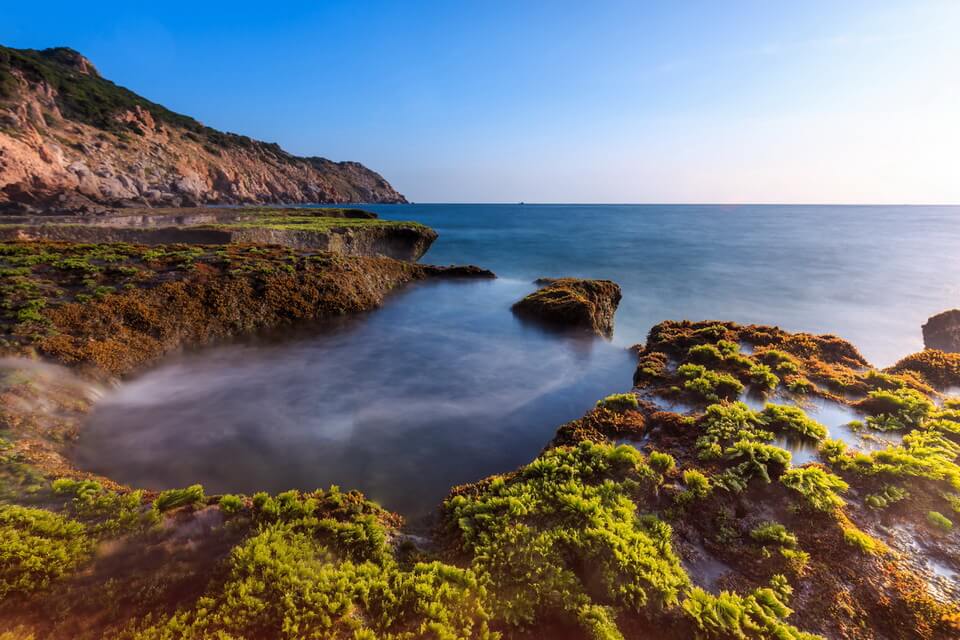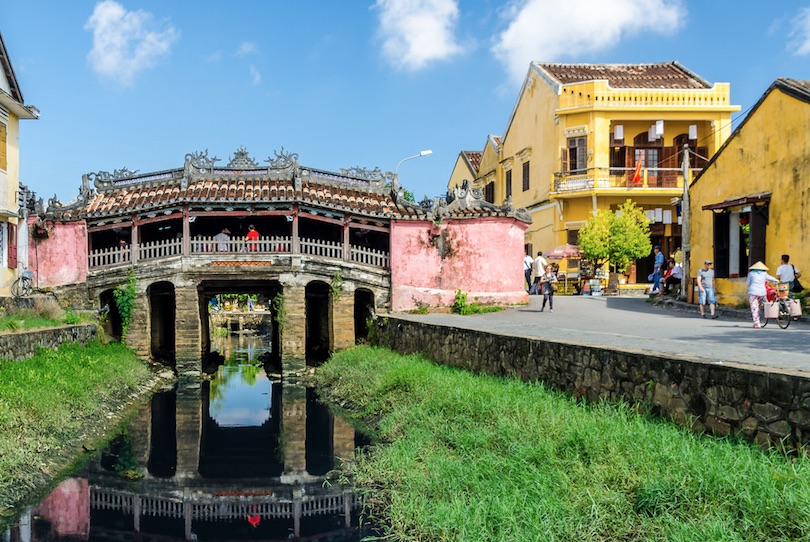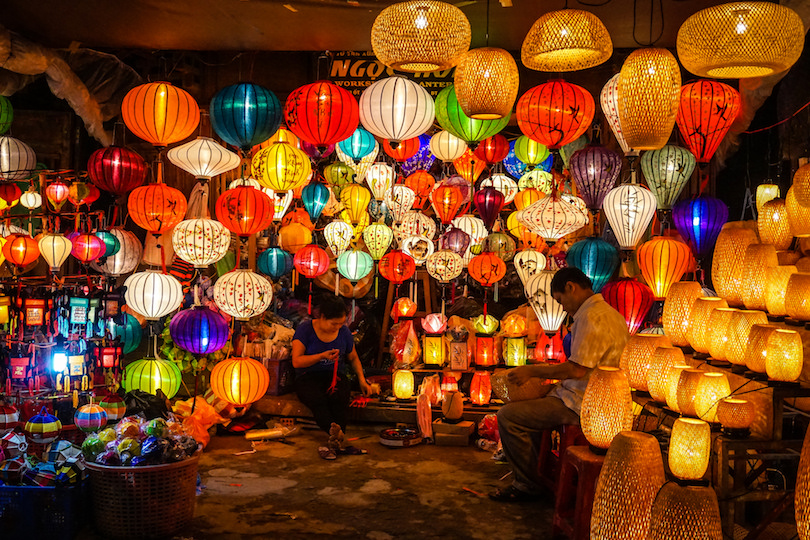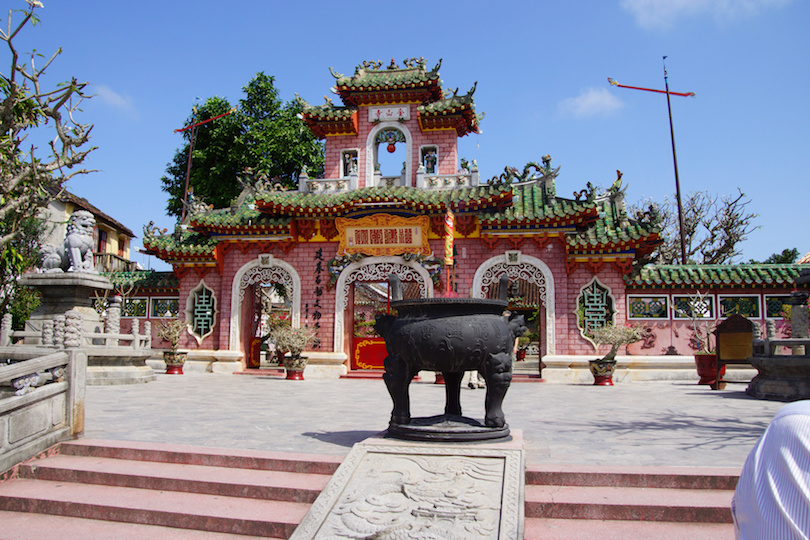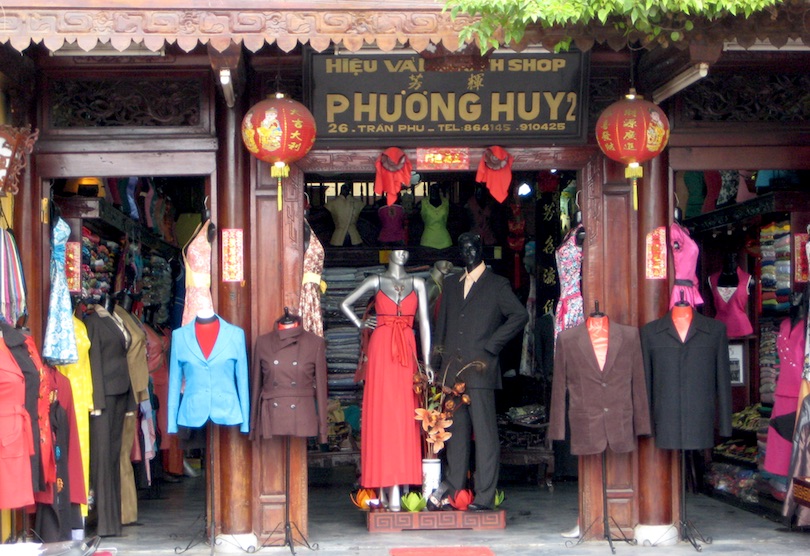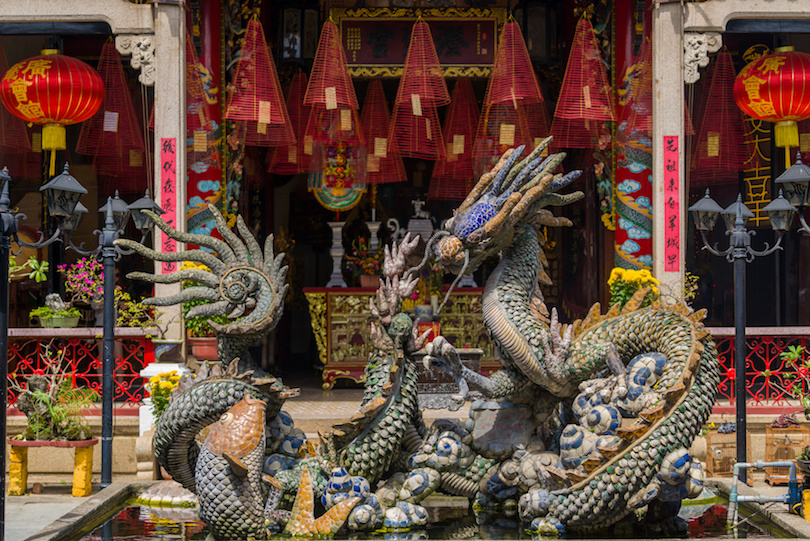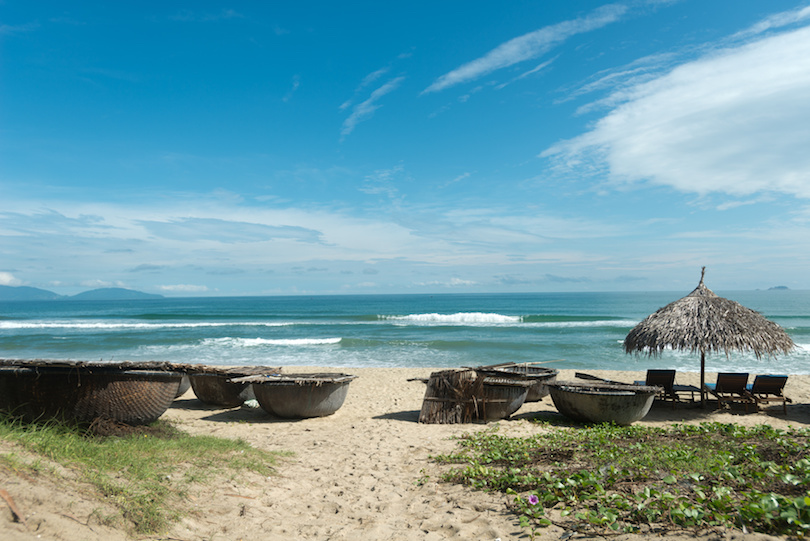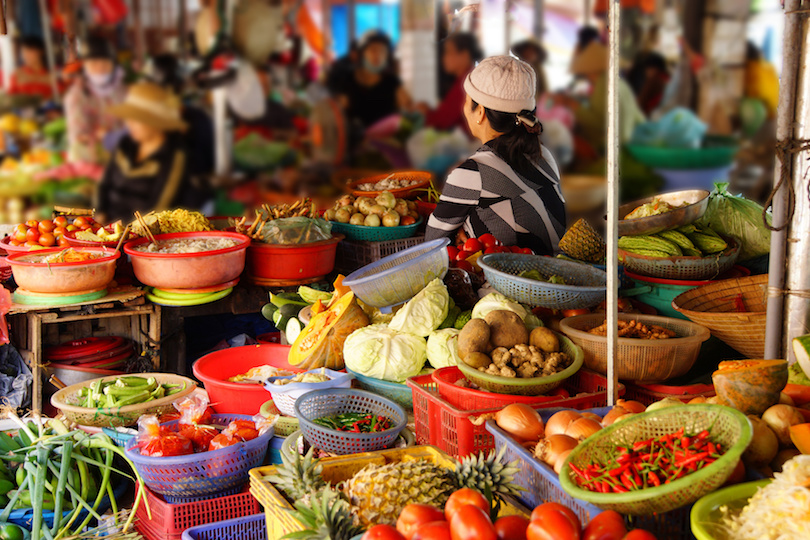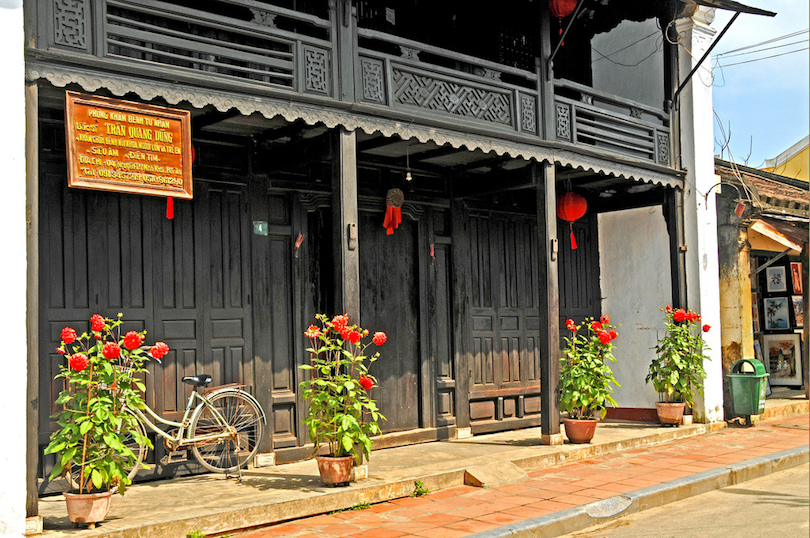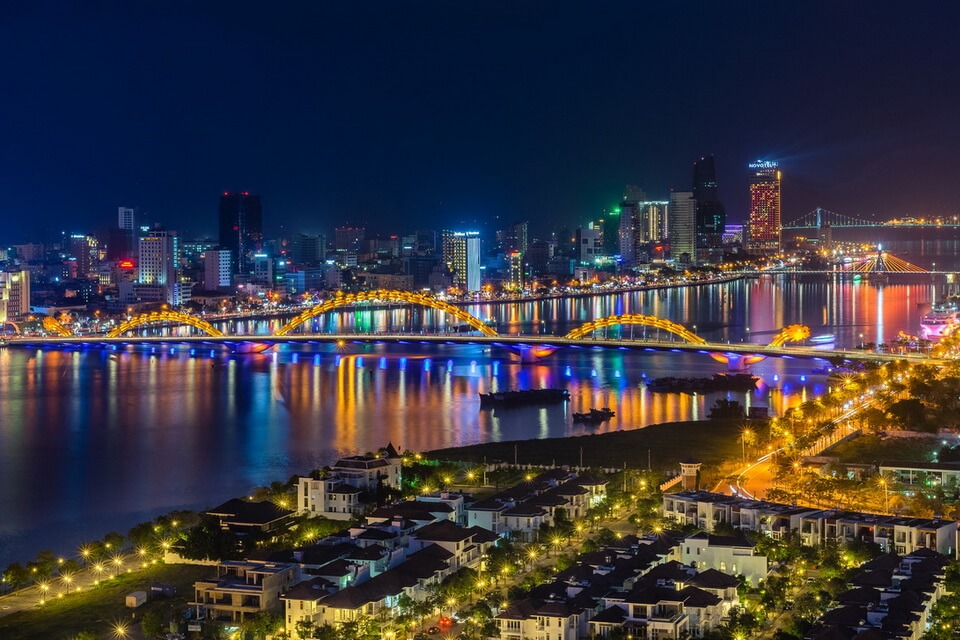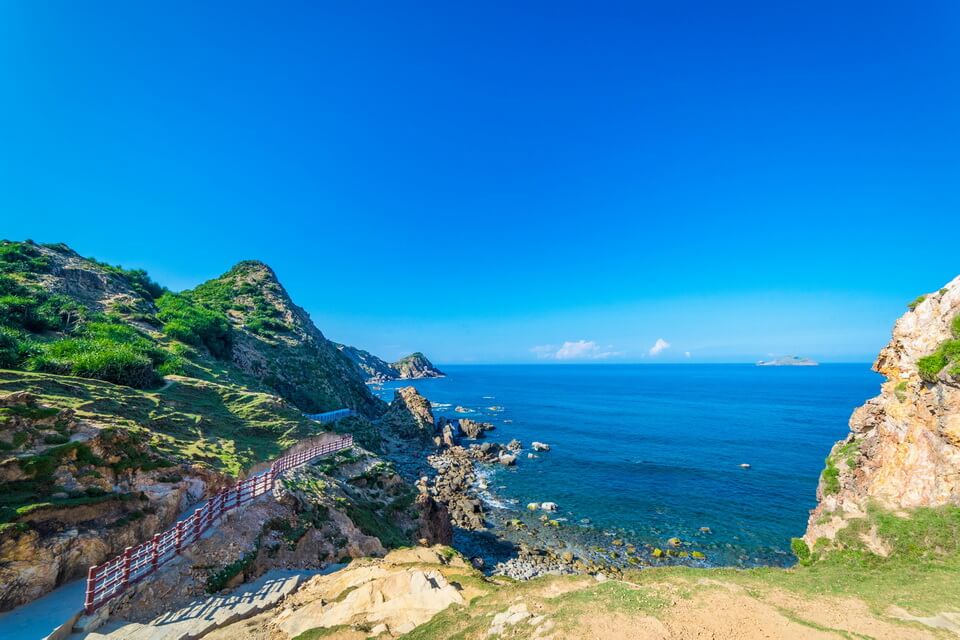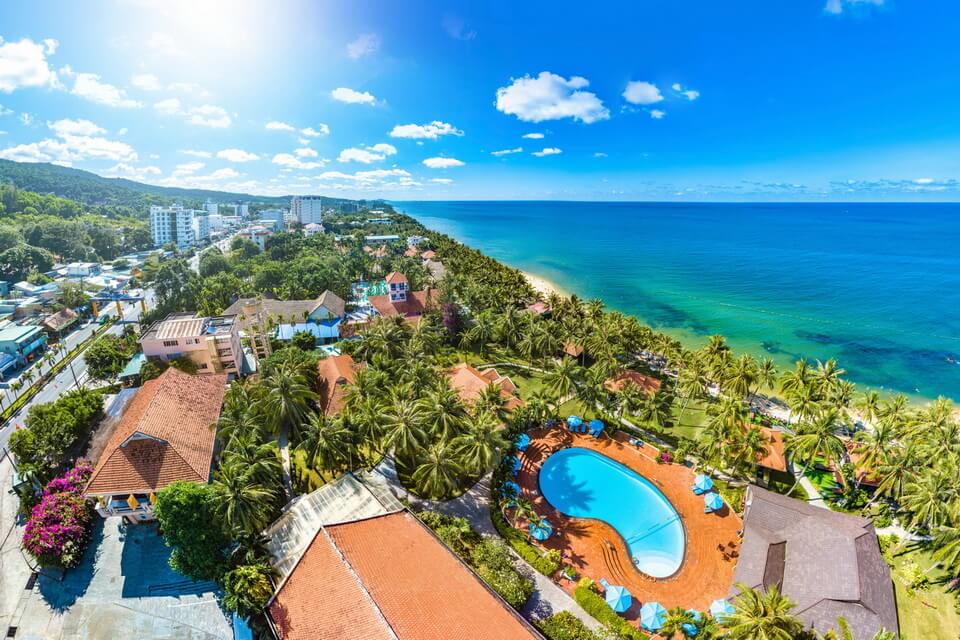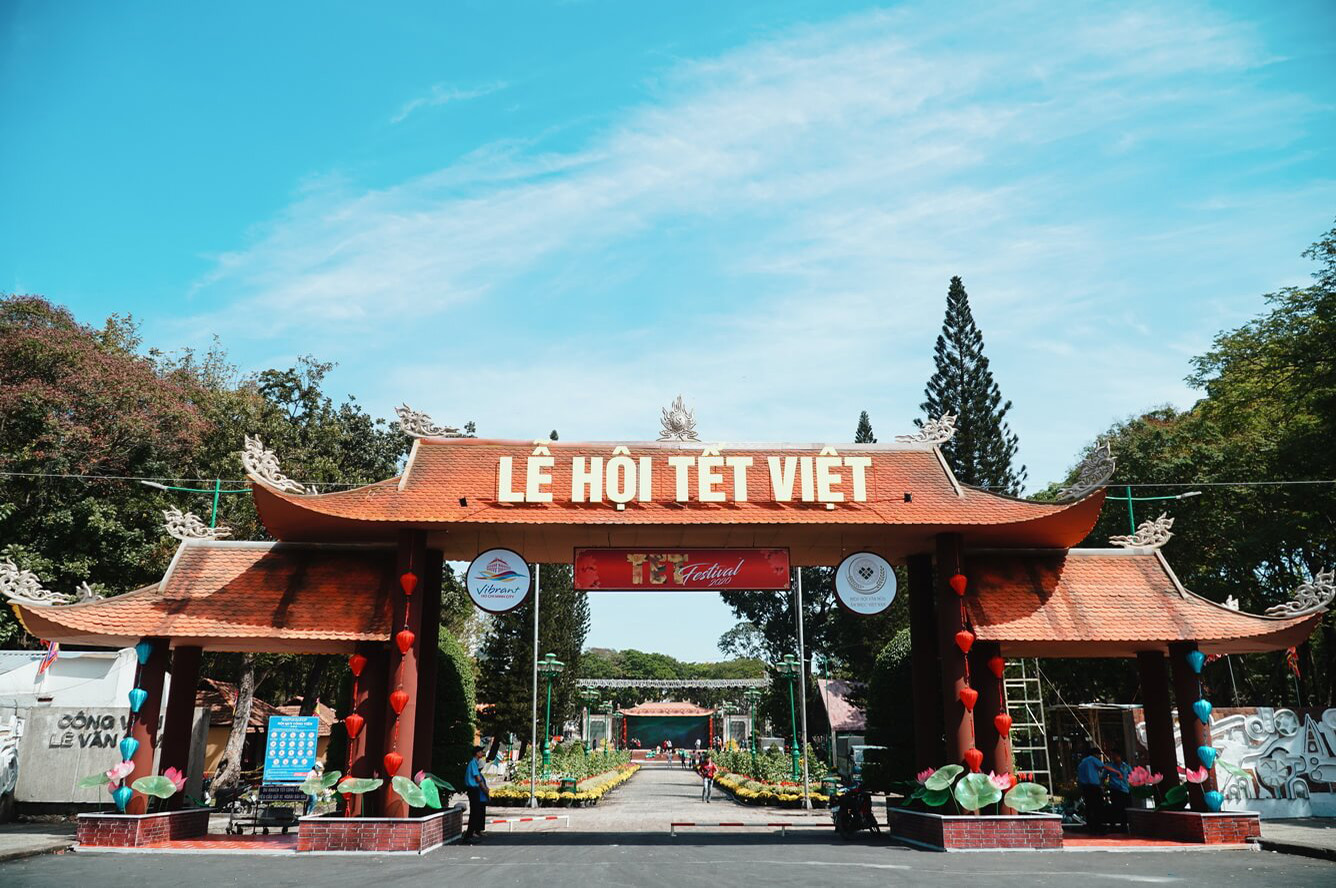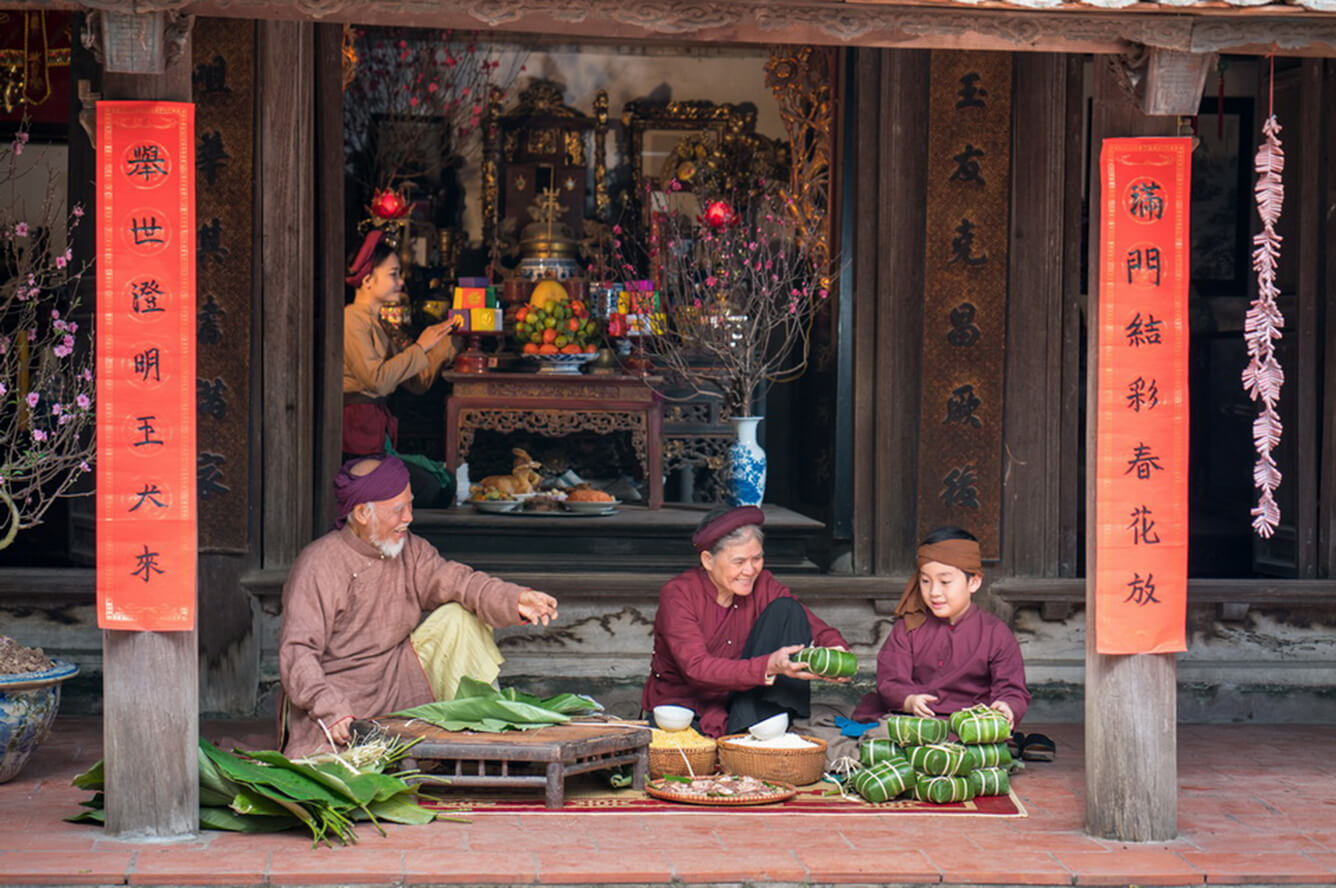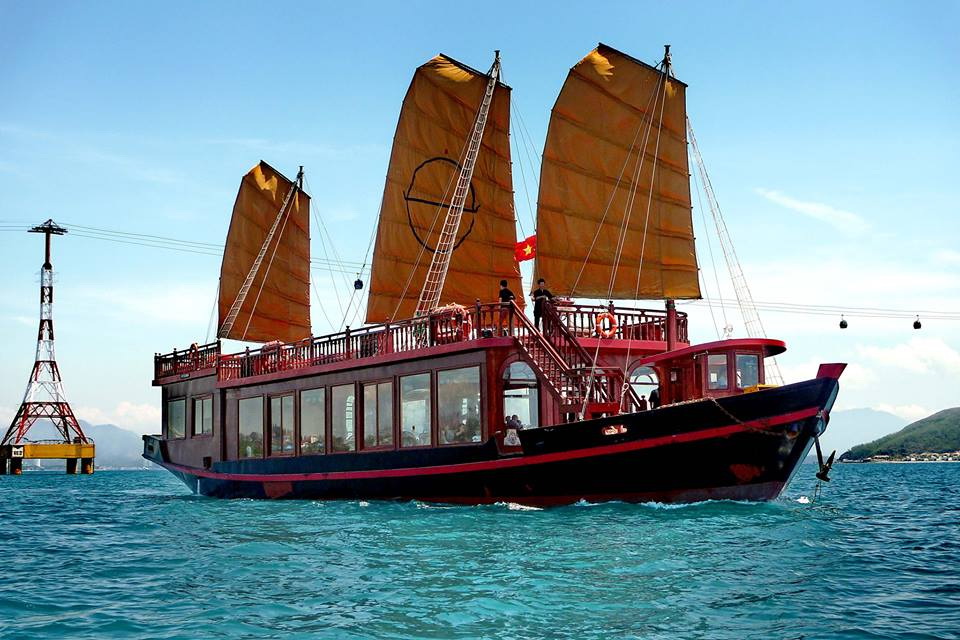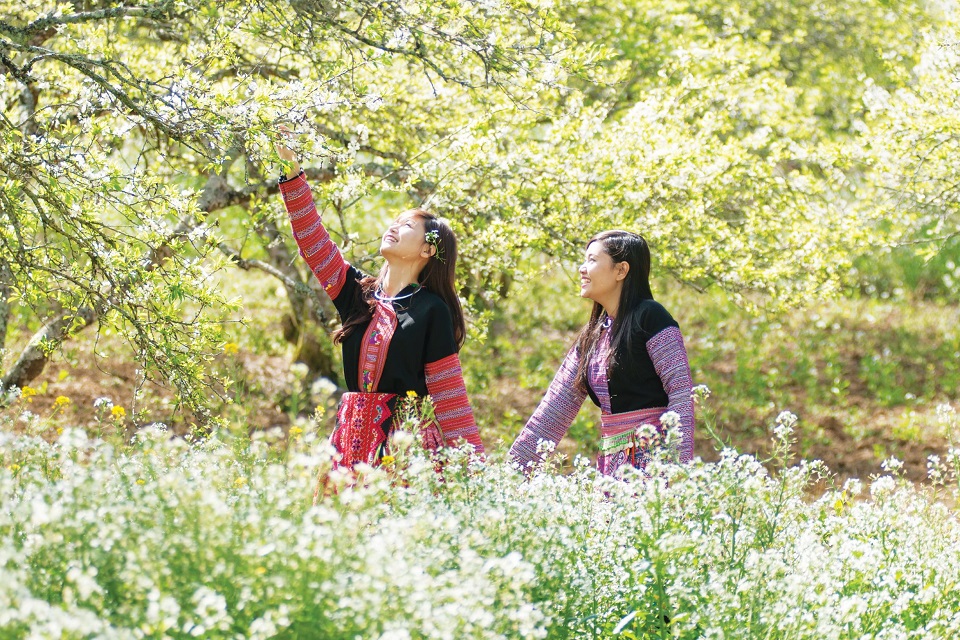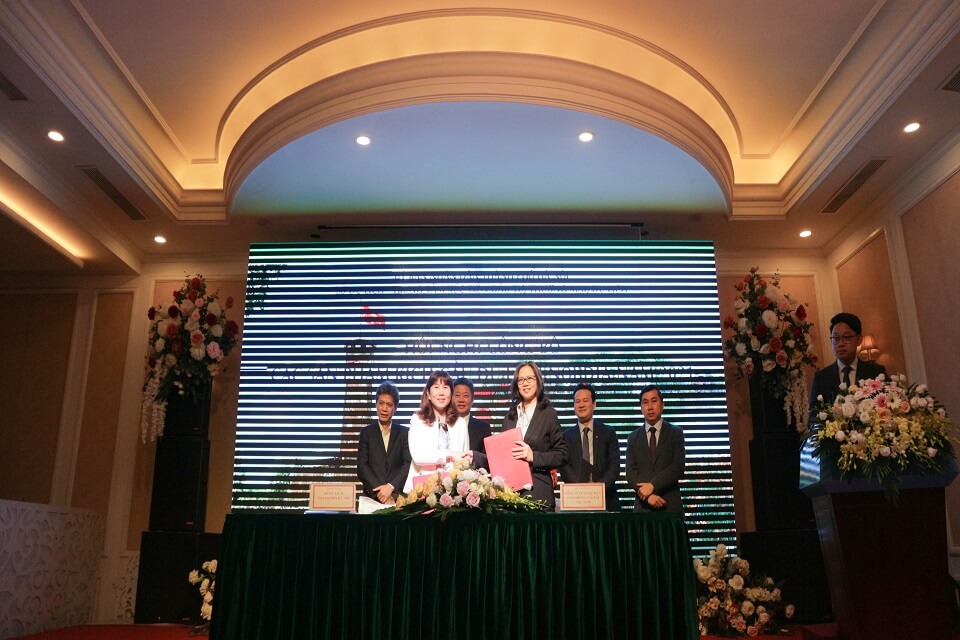1. Old Town
The Old Town of Hoi An is an remarkably well-preserved South-East Asian trading port dating from the 15th to the 19th century. Many of the historic buildings are built in a traditional Chinese style, and the roads are narrow and winding. Classical music is piped into the Old Town, and a single ticket allows you entrance into the main attractions. Highlights of the Old Town Include the Japanese Covered Bridge, the three so-called Old Houses and the Quan Cong Temple. There are several museums in the Old Town, but you may want to skip them in favor of watching the incredible folk music performances held several times each day at the Hoi An Handicraft Workshop.
2. Japanese Covered Bridge
The Japanese Covered Bridge, also known as the Cau Chua Pagoda, is one of the most visited landmarks in the city. The bridge was built in the 17th century to link Tran Phu St with Nguyen Thi Minh Khai St. This allowed the Japanese quarter of Hoi An to be accessible from the Chinese neighborhoods. The bridge is covered and resembles a Japanese pagoda, and its original style has been carefully preserved for the last 400 years. The covered bridge has a practical purpose, to shelter those crossing from the elements, but it is also decorative and is covered with ornate carvings depicting animals.
3. Hoi An Night Market
There is no shortage of shopping opportunities in the city, but one of the most interesting is found at the Hoi An Night Market. The market is located on Nguyen Hoang Street, just opposite the Japanese Covered Bridge. The market opens around five each evening, when more than 500 vendors open up their stalls to sell everything from souvenirs to clothing to fresh food. Perhaps the most-spotted item for sale is the paper lantern, which glows beautifully after nightfall. You can buy a colorful lantern to cast a glow as you shop, or you can take it home as a way to remember the colors, vibrancy and excitement of the Hoi An Night Market.
4. Fujian Assembly Hall
Phuc Kien is the common name for the Fujian Assembly Hall. Like other assembly halls in the city, Phuc Kien served as the gathering place for residents, traders and visitors from a specific area in China called Fujian. Later, the assembly hall transformed into a religious site to honor the deity Thien Hau. Visiting the Fujian Assembly Hall means being able to spot the colorful fountains in the courtyard, the ornate gates surrounding the property and the beautifully carved dragons in the main room. The Fujian Assembly Hall is still a popular place among visitors and residents of Fujian origin and ancestry.
5. Hoi An Tailors
Hoi An is filled with tailors, a tradition resulting from its past as a trading port on the silk route. Subsequently, getting something tailor made is one of the most popular things to do in Hoi An. At a true tailor’s shop in Hoi An, you can browse through countless varieties of fabric, choose colors and then get measurements. As soon as the next day, you’ll be able to pick up your complete suit or dress, or you can go back for a second fitting and get the perfect fit. Don’t be afraid to haggle on the deposit, paying only the full amount once the tailoring or garment is complete.
6. Cantonese Assembly Hall
One of the most popular attractions in Hot An is the Cantonese Assembly Hall. Also known as the Quang Trieu, the assembly hall sits right next to the Cau Pagoda. As the name suggests, the assembly hall was constructed by Cantonese settlers during the 19th century. Dedicated to the Thien Hau Holy Mother, the Cantonese Assembly Hall was a gathering place for worship and communication among Chinese visitors and residents. On a tour of the Cantonese Assembly Hall, you can admire the structure as well as the decor, which includes a striking dragon made from pottery.
7. Old House of Tan Ky
Another of the unusual attractions in Hoi An that straddles the line between residence and museum is the the Old House of Tan Ky. The home is more than 200 years old, and it has passed through the hands of seven generations within the same Vietnamese family. The home is architecturally interesting, and on a visit you can admire details like the pulleys that raise furniture to avoid flooding or the stunning carved wooden balcony. Family members still reside in the Old House of Tan Ky, which brings the history of the property to life in a fascinating way.
8. An Bang Beach
One of the busiest beaches in all of Vietnam is Hoi An’s An Bang Beach. An Bang Beach offers a stretch of sandy shoreline and access to the blue ocean, and it is the perfect place to relax in the sun or head in for a refreshing swim. Unlike other coastal destinations in Hoi An, erosion isn’t a problem at An Bang Beach. That means there is more sand than in many other surrounding coastal spots. Countless vendors are lined up under the shade of the palm trees to feed hungry beachgoers throughout the day.
9. Central Market
If you’re a foodie, then there is perhaps no better destination in the city than Central Market. Situated on the riverside, the large market is packed with stalls, each of which is run by a different vendor. The stallholders serve a huge variety of food at extremely cheap prices, including Vietnamese favorite: Cao Lau. This noodle dish made with greens and pork is fresh, delicious and unforgettable. There is also a great fish market which is worth visiting.
10. Old House of Phun Hung
The home of Phun Hung is two stories, and was built in the 18th century. More than eight generations of the same family have lived in the Old House of Phun Hung since then. What makes this house truly unique, however, is the fact that it is more than just a museum: It is still a home, and the tour guide today is part of that eighth generation. Follow Ms. Anh around as she shows you her family home, and be on the lookout for the details that make the home unique. You’ll see carved Chinese beam supports, trap doors and a distinct Japanese influence in both architecture and decor.
Source Touropia


